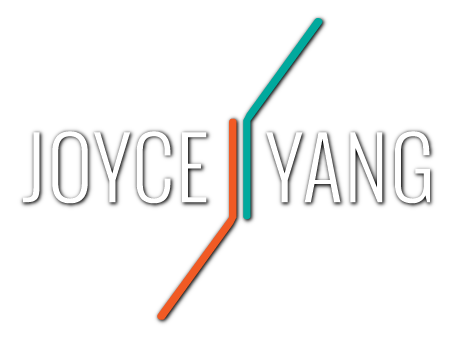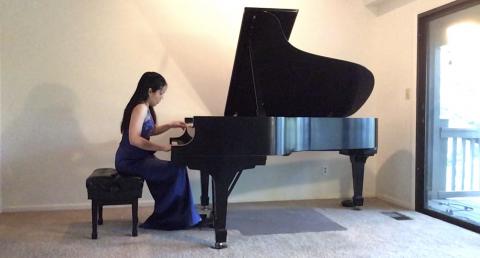
Giving a Premier During Quarantine
My home has always been my hiding place, a place where I go in between concerts to regroup and improve my craft. My practice studio isn't glamorous and was never meant to be seen by thousands of people. Since most of the concerts have gone virtual since the quarantine began, musicians have started to transform their practice rooms into impromptu concert stages. Spaces that used to be private and only accessible to family members and friends are now open to the world. In July, I decided to join the world and record a world premier performance from my living room.
I had been really looking forward to going to the Seattle Chamber Music Festival to play chamber music with my friends in July. In my previous visits, I very much enjoyed attending this festival to rehearse, socialize, and play concerts for their dedicated audiences. Because of Covid-19, it was impossible to gather in large groups, so they came out with the next best thing: a full season of concerts to be streamed online.
Some musicians braved it out in Seattle and played chamber music in the recording studio to be streamed live for an online audience. Others that preferred not to travel (myself included) opted to submit performance videos from remote locations (a.k.a. my living room).
I was asked by the artistic director James Ehnes if I would be open to learning a new piece by Aaron Jay Kernis, a celebrated Pulitzer-Prize winning composer. I had been a big fan of his music so I was thrilled with the opportunity to premier his new piece and have a chance to interact with this legendary composer.
In late May, I received the score to “Un Bacio” (A Kiss), a fantasia on themes of John Corigliano and Mark Adamo that he wrote as a present for their 25th anniversary. Upon sightreading the score, I was instantly enthralled by its perfumed chords, shimmering filigree, and grand climaxes. I noticed a very complex narrative with many changing tempi and I was eager to get to the bottom of it.
I had 6 weeks to learn the piece, internalize it, and deliver a compelling world-premiere performance video. In the first week, Aaron explained how this piece came to be and shared his musical and contextual inspirations for this piece, which were from the movie The Red Violin (John Corigliano) and the opera Little Women (Mark Adamo). I was fascinated to find that the theme used from The Red Violin shared a similar shape to the one from Little Women, allowing the two themes to mingle and co-exist simultaneously. (How is that for an anniversary gift!)
In the first couple of weeks, I tried to learn the notes and understand the arc of this composition. Since there were no previous recordings of this piece to guide me, I had a difficult time conceptualizing it. It was difficult to wrap my head around a piece while learning the notes at a fraction of the intended speed. Instead of learning the piece from beginning to end, I worked on it in sections, starting with ones that appeared most challenging. When I got through all the sections, I “glued” them together to create a continuous journey. By the end of week one, I was able to understand what the main “pillars” were. If this was a movie, it was as if I started to understand the main conflict in the storyline and the important turning points.
In week two I practiced diligently so that I could play all the notes up to performance tempo. I often refer to this stage as “weed pulling”, as it is a tedious and repetitious process, and when I am finished, I feel like I have cleared and cultivated the soil so the creative process of beautification can take place. I reached out to the composer with a few logistical questions. What a luxury it was to get the answers from the composer within minutes! (This is the Number one perk of playing a piece by a living composer.) I also pleaded with him to shave a few notches off the tempo marking in a very virtuosic passage, since “there is no way my hands can move that fast”.
After week two, the piece was somewhat memorized and I could play most of the notes. In weeks three and four, a more creative process took place. I took all the “nails” out of the piece, disassembled it completely, and started to focus on one small detail after another. I obsessed over the smallest notes and explored them to no end. Along with this detailed work, I studied the score to the best of my ability and I asked myself many questions such as: Why did the composer write a sudden change in tempi? (Does this mean a sudden falling in energy level or a “change of heart”?) Why did he write a fortissimo on this chord? (Is this an arrival point or a sudden burst of energy?) Why is there a rest? (Is this a pregnant pause or an urgent breath?)
At the end of week four, I sent the composer my “first draft” video of the piece. I was very much worried when I hadn’t heard from him in 12 hours. I thought “What if he thinks it is completely wrong? Thankfully, I received a note of approval from him where he complimented my “voicing, long line, expression, and shape”. It was a big relief to know that I was on the right track. The email wasn’t all praises. He also wrote about a handful of things that could be improved and changed, since they didn’t quite fit with what he had in mind. Some of these things were regarding details I failed to notice (or learned wrong) and others were interpretative discrepancies. He also pointed out a few moments that were extra special to him.
In weeks five and six, I worked to improve the piece so that it would fit the composer’s intentions. The more I worked on the piece, the more ideas came to me. I experimented on crafting a phrase in a variety of different ways while still staying true to everything the composer wrote. I was overwhelmed by the layers I found within the score. I felt like I needed years to master this score.
A few days before the performance video was due, I started to record myself. I cleaned my living room clear of clutter, put on a concert gown for the first time in 4 months, and started to perform in front of my iPad and a Zoom h4 microphone (as well as an audience of stuffed animals).
I made 17 full takes and over 80 partial takes. Since I didn’t have the skills to edit or cut/paste the clips, I had to record one clean take to submit to the festival. At the end of the three days, I was exhausted from performing and tired of listening to my playbacks. I never felt like I reached the ultimate take. I kept feeling like there was going to be a better take if I would record it just one more time. When would it be “good enough”? Ultimately, I chose the one performance I did in front of my husband. Having him in the audience gave me a kind of urgency, and I performed, rather than played. I pressed the keys of the piano to reveal a story buried in the notes, to get the emotions across, to highlight the beautiful message the composer wanted me to illuminate.
I submitted my performance just a few hours before the deadline. As I sent my chosen performance to the composer, I told him even though it wasn’t perfect, I believed this to be my most “inspired and colorful” take. I thanked him for this gorgeous piece and assured him this would not be the last time I performed this piece. (“May I keep it?” I asked him.) Soon after, I got a lovely note back from the composer saying “you really own it now..... so poetic and emotional, and beautifully voiced.. wonderful, thank you for all you've put into this”. This seal of approval meant the whole world to me.
The premier was web-streamed a few days later as part of the Seattle Chamber Music Festival. For the first time, I attended my performance virtually, and watched myself play with a glass of wine in my hand along with the rest of the world. It was tough not to constantly criticize my playing as I watched myself, but I was thrilled I was finally getting to unveil this beautiful piece of music. It was also nice to not have to worry about memory slips or live performance anxieties.
When I finished, there was no applause, no approval from an audience, no fellow musicians giving me the thumbs up, no uncorking of the champagne backstage, no celebratory reception. Who was out there listening? Anybody? Right then and there, finishing my glass of wine, I sat there missing the audience and all the hoopla that comes with giving a world-premier performance of a brand new piece.
It is a lonely world for musicians during the pandemic. I don’t know if I will ever get comfortable performing in front of an iPad and playing for a virtual audience. But having said that, I am grateful for this opportunity to learn this new work and discover a new soundscape I hadn’t known before. This project gave me the purpose, direction, momentum, and urgency that was missing in my quarantined life. I felt alive knowing I had the responsibility to give life to a new piece. After going through this whole process, I can’t help but feel tremendously lucky to have found a way to continue making music for the world to hear.
To listen/watch the performance, follow this link: https://youtu.be/QwCFrRnWUEY
